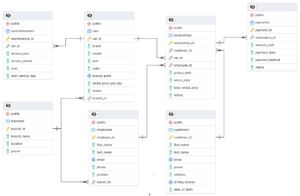Creating and Managing Users and Roles in PostgreSQL

PostgreSQL is a powerful, open-source relational database management system that provides robust user and role management features. Understanding how to create and manage users and roles is essential for maintaining security and access control in a PostgreSQL database.
Understanding PostgreSQL Roles
In PostgreSQL, users and groups are collectively referred to as roles. A role can function as a user (with login privileges) or as a group (for managing permissions). PostgreSQL uses a role-based access control (RBAC) system to grant privileges to different database entities.
Key Differences between User and Roles On PostgreSQL
| Difference | User | Role |
|---|---|---|
| Concept | A type of role that can log in | Can function as either a user or a group |
| Login Privileges | Can log in to the database | Can only log in if assigned the LOGIN attribute |
| Purpose | Used for individual accounts | Used to manage access privileges flexibly |
| Example Usage | A user for an application or admin | A role as a group to manage multiple users’ access |
Creating a New User (Role) in PostgreSQL
To create a new user in PostgreSQL, you can use the CREATE ROLE or CREATE USER command. By default, CREATE USER is an alias for CREATE ROLE with login privileges.
1. Creating a User with Login Privileges
CREATE ROLE username WITH LOGIN PASSWORD 'securepassword';
Alternatively:
CREATE USER username WITH PASSWORD 'securepassword';
2. Creating a Superuser
A superuser has unrestricted access to the database:
CREATE ROLE admin WITH SUPERUSER LOGIN PASSWORD 'adminpassword';
3. Creating a User with Specific Privileges
To create a user with limited privileges, specify permissions:
CREATE ROLE analyst WITH LOGIN PASSWORD 'securepass' CREATEDB;
This allows the user analyst to create databases but not act as a superuser.
Managing User Privileges
After creating users, you need to assign privileges based on their responsibilities.
1. Granting Privileges to a User
We can grant specific privileges to a user using the GRANT command. For example:
GRANT SELECT, INSERT ON employees TO analyst;
This grants SELECT and INSERT permissions on the employees table to analyst.
2. Granting Role Membership
To assign a user to a role (group), use:
GRANT role_name TO username;
Example:
GRANT admin TO analyst;
Now, analyst inherits the privileges of admin.
3. Revoking Privileges
If you need to revoke a privilege from a user:
REVOKE INSERT ON employees FROM analyst;
This removes the INSERT permission from analyst on the employees table.
Deleting a User in PostgreSQL
If we need to remove a user, first ensure they do not own any database objects.
1. Check User-Owned Objects
SELECT * FROM pg_tables WHERE tableowner = 'username';
If they own objects, transfer ownership before deletion:
ALTER TABLE employees OWNER TO new_owner;
2. Drop the User
DROP ROLE username;
If the user owns a database, drop it first:
DROP DATABASE database_name;
DROP ROLE username;
Conclusion
Effective user and role management in PostgreSQL ensures secure access control and database integrity. By properly creating, granting, and revoking privileges, database administrators can maintain security while allowing appropriate access to users. Start implementing these practices to manage your PostgreSQL database efficiently!
